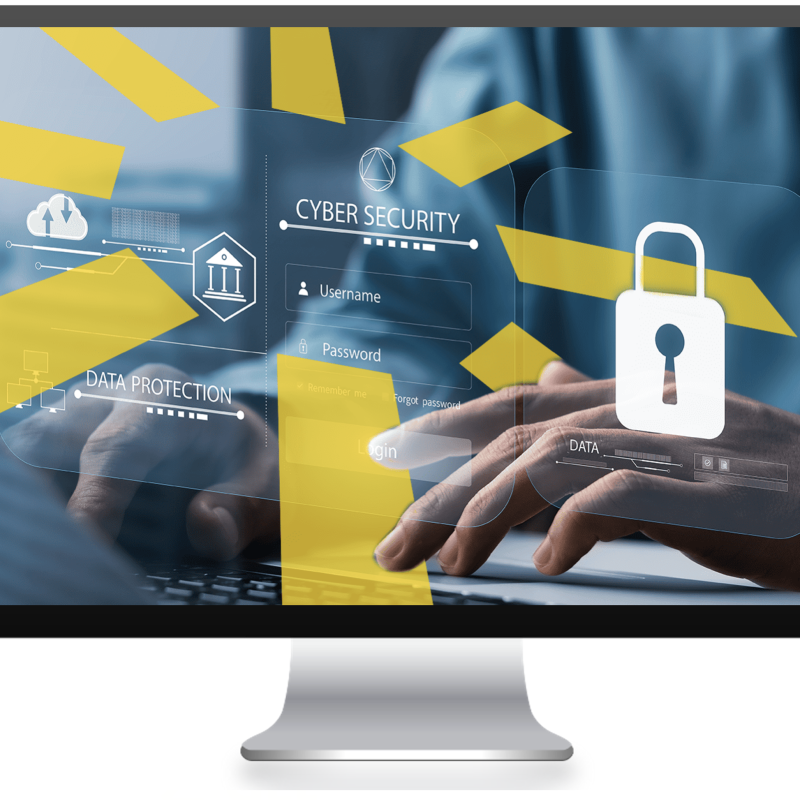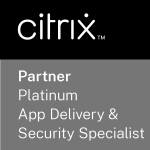Igel FAQs
Read only and secure by design, Igel has built an operating system for the cloud client era. If you have a question, chances are we’ve probably been asked it before, so here’s our pick of the common Igel FAQs from across our business and technical teams.
Who is IGEL?
IGEL is a multinational software company based in Germany best known for their “Next Generation edge operating system” (IGEL OS) which is built to secure access to cloud workspaces such as, but not limited to, Citrix Workspace, Amazon Workspaces, Microsoft AVD and VMWare Horizon.
What is IGEL COSMOS?
- COSMOS is an IGEL unified platform that will securely manage and automate the delivery of digital workspaces from any Cloud.
The key message is that IGEL have completely separated the Base IGEL OS from it’s validated and integrated applications and interfaces. IGEL UMS 12 supports the new IGEL OS 12 but also the legacy IGEL OS 11 enabling simple and seamless migration. They have added a value-add cloud service to manage and deliver the separated applications and interfaces and thus offering a modular architecture, providing end-point control and delivering, what is termed, “End-User Freedom”, allowing users to work freely in the hybrid environments of today.
What is IGEL COSMOS made up of?
The core of the IGEL COSMOS platform is a new IGEL UMS v12.0 management suite and the new v12.0 IGEL OS end point firmware. There are additional cloud based services that include the new App Portal.
What is the new IGEL COSMOS App Portal?
The new IGEL App Portal delivers a full range of validated applications from IGEL’s, IGEL Ready partner community. The App Portal streamlines the process of application qualification, integration and introduction by being separate and independent from the IGEL OS endpoint operating system and removing the dependency on the old highly integrated software release cycle.
What is IGEL UMS (Universal Management Suite)?
IGEL UMS is a single management solution that supports up to 300,000 end points running the IGEL OS. It is easy to use and purpose built to simplify the management of these devices. UMS supports several operating systems such as Microsoft Windows Server and Linux and also supports multiple databases such as SQL, Oracle and a local embedded database.
What is IGEL OS?
IGEL OS can be referred to as the IGEL firmware, it is a Linuxbased operating system optimised for secure, scalable delivery of virtual desktops and cloud workspaces. The IGEL OS can be used to replace either permanently or temporarily an existing operating system, allowing you to convert any appliance into an IGEL device.
What’s new in IGEL OS 12?
The main features of IGEL OS 12 are that it is more lightweight and adaptable. It supports the faster delivery of features and applications tuned to specific use cases via the COSMOS App Portal. What this means is that features such as VMWare Horizon Client, or Zoom Client or Webex client etc. can be updated independently from the main IGEL OS thus providing additional flexibility and reducing update times, improving user experience. Other features include deeper insight into endpoint usage, security, status and compliance of the IGEL UMS-Managed endpoints.
What’s new in IGEL UMS 12?
- The IGEL UMS, simple to use platform has been extended to support a mix of the endpoint devices running either IGEL OS 11 or the new IGEL OS 12. With this support of both platforms it enables for the simple and easy migration removing the need for companies to migrate their whole environment at once (big bang type migrations).
When will COSMOS be available?
IGEL COSMOS, IGEL UMS 12 and IGEL OS 12 will be available April 1st 2023.
How is IGEL OS Licenced?
IGEL OS Licence is based on the MAC address of the IGEL appliance. Licence can be installed manually during installation or through the Licence Management feature within UMS.
What IGEL Licences are available?
- As of the 1st July 2022 Subscription licences were made available which provided licenced device the full IGEL feature set (Workspace Edition, Maintenance, Enterprise Management Pack and then a choice of Support level)
From the 31st December 2022 no other licencing options are available.
Can IGEL licences be moved to new appliances?
Yes. Using the UMS management GUI licences can be easily transferred between devices.
What is the IGEL Cloud Gateway (ICG)?
ICG is required to manage and control endpoint devices sitting outside the corporate LAN, where the UMS and those devices are not in the same network. ICG is not a VPN solution, but a highly secure way to set up, manage, and control remote IGEL OS-powered devices.
How are remote IGEL devices supported?
Remote IGEL devices are supported via the IGEL Cloud Gateway (ICG). ICG is required to manage and control endpoint devices sitting outside the corporate LAN, where the UMS and those devices are not in the same network. ICG is not a VPN solution, but a highly secure way to set up, manage, and control remote IGEL OS-powered devices.
How often is the IGEL OS upgraded?
Active IGEL software maintenance on a device is required in order to apply firmware updates which occur up to four times a year.
What is an IGEL UD Pocket?
- An IGEL UD Pocket is a small USB device that allows you to boot the IGEL OS on any compatible endpoint without affecting the base OS on that device.
To use a UD Pocket simply boot the device into which the UD Pocket is installed from the USB port.
How many screens does IGEL OS 11 support?
- IGEL OS 11 will support up to 4 (four) screens. The device has to have Intel, ATI/AMD or NVIDIA display chipset.
What is the IGEL Licence Portal (ILP)?
The ILP is the core service for handling IGEL Licences and is the where all purchased IGEL Licences will be found. The ILP is a cloud-based portal working in conjunction with the IGEL UMS it can assign a software licence to the respective endpoint and can also transfer a licence from one endpoint to another.
Are there user roles within the ILP?
- Yes. there are three roles, Administrator, service provider and User. The administrator has, as one would expect, full administration rights to the licence portal, the service provider has most of the administration right except the ability to add, remove or change user roles. The user simply has the ability to view the licences within the portal.
For more details see Roles and Permissions (igel.com)
Can I run a Proof of Concept (PoC)?
Yes. IGEL firmware and UMS software is available for download from the Gel web site and the IGEL OS 11 firmware download provides the ability to request a 30 evaluation licence.
Is there IGEL training online?
Yes. There is an IGEL Academy web site in which you can get basic training and certification on IGEL products.
Is there an IGEL knowledgebase?
Yes. IGEL have a web based “IGEL Community” in which customers and partners can post questions and find answers to problems. The community also hosts How To Video’s to help educate and develop users knowledge and capabilities.
How do I log a support call with IGEL?
If you are an IGEL customer, you can simply go to support.igel.com, log in and then log a support ticket for the issue you have.
Where can I find out more about IGEL?
IGEL have a knowledgebase “IGE Knowledge Base” available at www.kb.igel.com
What is the IGEL OS Creator?
With the IGEL OS Creator you can install the IGEL OS 11 firmware on any device that supports it. The IGEL OS creator can also be used to recover broken installations when devices can no longer boot.
What devices are supported by IGEL OS 11?
- The core requirements for an IGEL OS 11 installation is a 64bit CPU, a CPU speed of greater than 1GHz and at least 2GB RAM.
4GB of RAM or more is recommended if you plan install IGEL OS 11.04 or above and/or plan to use client side multi media , high resolution graphics and 2 or more monitors.
What is IGEL Product Security Information?
IGEL Product security information is the web page on which any security advisories are published. This site includes details of the vulnerability and steps on how to fix it or mitigate the vulnerability.
How can you get automatic notifications from IGEL?
It is possible to “Subscribe for Updates” if you go to the www.igel.com web page and find the link at the bottom of the page. Once subscribed you will initially be subscribed to ALL the IGEL mailing lists, however, you can then go to the “unsubscribe” link at the bottom of the e-mails and modify what notifications you wish to receive.
Can I set up IGEL UMS Server in HA (High Availability) configuration?
Yes. The option for High Availability can be selected during both the initial installation and post installation should a single node need to be upgraded to support more devices or provide high availability.
How many UMS Servers can be in an HA configuration?
- In theory there is no limit. You can install multiple UMS Servers to support tens of thousands of IGEL clients and load balance using separate UMS Load Balance servers.
A typical deployment for greater than 50,000 IGEL clients would consist of up to 6 UMS Servers with up to 3 UMS Load balancing servers.
What is a UMS Load Balancing Server?
The UMS Load Balancer Server is a UMS “Subnode” that is created when the user selects High Availability in the initial UMS configuration. This subnode can be created on the UMS server itself when configurations are small, typically less than 50,000 IGEL clients. For larger deployments these UMS Load Balancer servers need to be configured as standalone servers.
Can I use embedded database with UMS HA configuration?
No. UMS HA configurations must use a central database such as SQL, Oracle and PostgreSQL.
Can I migrate a single node UMS deployment to HA?
- Yes. It is possible to migrate from single mode to HA. The process very much depends on the single node configuration, whether it has embedded database or external. Details for migration can be found at Switching from a Standard UMS Installation to an HA Installation (igel.com)




